Ontario allocates beds to long-term care company accused of ignoring residents as they cried hours for help
The Doug Ford government says it has allocated hundreds of beds to the five Ontario long-term care chains at the centre of a military report that shocked the nation more than a year ago with details of horrifying conditions and neglect.
Rykka Care Centres, which owns Eatonville Care Centre and Hawthorne Place Care Centre, two long-term care homes where 93 people died altogether, is in the running to get public funds to build 160 new and 192 redeveloped beds — a move that critics say “rewards” the companies behind the deadliest homes.
CTV News Toronto is working on a five-part series looking at one company at a time, and the potential beds the Ontario government has in store for them guaranteeing their future. Click the links to read part one on Southbridge Care Homes and part two on Sienna Senior Living.
PART 3: RYKKA CARE CENTRES
Alessandra Lamanna says she believes that her 69-year-old mother would have been alive today if the Canadian Armed Forces entered Hawthorne Place Care Centre just a week earlier to help the long-term care home fraught with staff shortages amid the first COVID-19 wave.
The Canadian Armed Forces first got the call in April 2020 to help five long-term care homes in Ontario grappling with severe COVID-19 outbreaks and staffing shortages. The notorious home owned by Rykka Care Centres was one of the first to get military support starting on April 24, three days before Lamanna says her mother was taken to hospital in an unresponsive state. If they have arrived just a few days earlier, Lamanna said her mother may have been saved because someone may have noticed she needed help.
In hospital, she was told by nurses that her mother had tested positive for COVID-19 earlier and was battling sepsis. Government inspection reports eventually showed the home had failed to monitor the symptoms of their residents, and that staff said they were struggling with extreme shortages. Lamanna said the province sent her the inspection report, saying her mother was one of the residents mentioned in the reports.
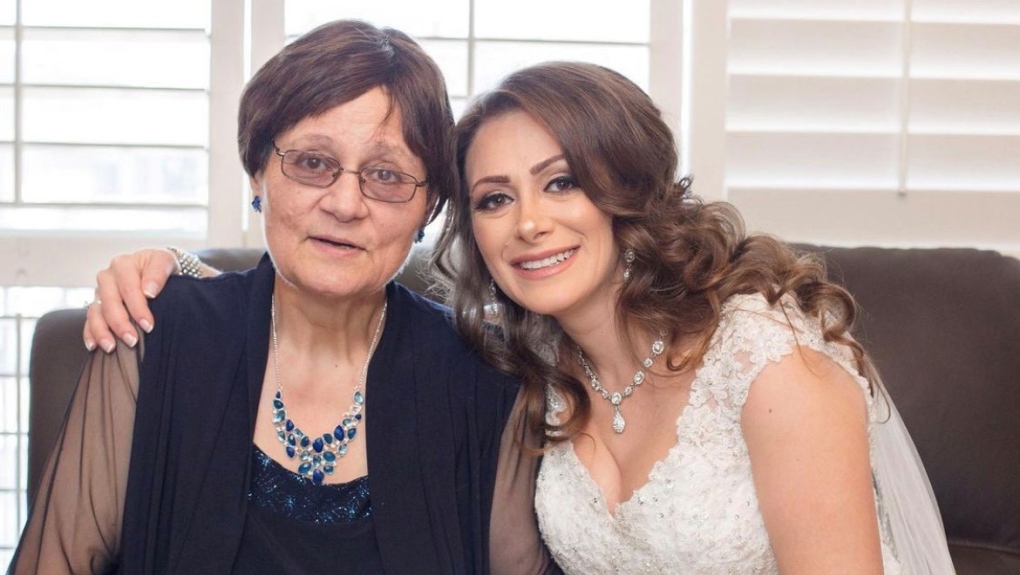 Alessandra Lamanna says she believes that her 69-year-old mother would have been alive today if the Canadian Armed Forces entered Hawthorne Place Care Centre just a week earlier to help the long-term care home amid the COVID-19 pandemic. (Supplied)
Alessandra Lamanna says she believes that her 69-year-old mother would have been alive today if the Canadian Armed Forces entered Hawthorne Place Care Centre just a week earlier to help the long-term care home amid the COVID-19 pandemic. (Supplied)
A month after their mission, on May 20, the military published a scathing report, written by Brigadier-General C.J.J. Mialkowski, detailing allegations about the conditions inside two of Rykka Care Centres homes, Eatonville Care Centre and Hawthorne Place, confirming the worst fears of families whose loved ones had died within their walls.
“The military caught everything that I had been trying to say,” Lamanna said. “If they were in there before, they would have brought to everyone’s attention what was going on in that home, the neglect that was going on in that home.”
“They didn’t even give any updates, saying they don’t have time to tell me how my mom was doing. My mom was a diabetic. I was trying to ask how her blood sugar was. I heard nothing”
In his military report, Mialkowski described how residents could be heard crying for help and would wait sometimes up to two hours before staff at the Hawthorne Place would respond. Staff were alleged to leave residents soiled in their beds, resulting in skin breakdown.
“[There was] significant deterioration of cleanliness standards throughout the long-term care home,” the report said. “Protocols in place have a near 100 per cent contamination rate for equipment, patients and overall facility. Little to no disinfection had been conducted at the facilities prior to Canadian Armed Forces operations. Significant gross fecal contamination was noted in numerous patient rooms.”
The report explained that N95 masks were provided to staff without actually fitting them and that residents slept on bare mattresses because there was a shortage of clean linen. Mialkowski said residents were not turned in their beds leading to pressure ulcers, and that the staff did not even have the supplies to care for wounds. He said that sometimes one registered nurse would care for 200 patients.
When families were locked out of the home at the start of the pandemic, Lamanna said she got worried because she knew her mother needed her for basic care. She said the home struggled with staff shortages and overcrowding even before COVID-19, and added that sometimes the home would get so hot in the summer that she too would have trouble breathing.
Lamanna said she knew very little about what was happening inside the home before the military arrived in the first wave. Whenever she called, she said staff would tell her they were too busy to talk. She said she only spoke to her mother once through video call during that time, adding that she became even more concerned as soon as she saw her.
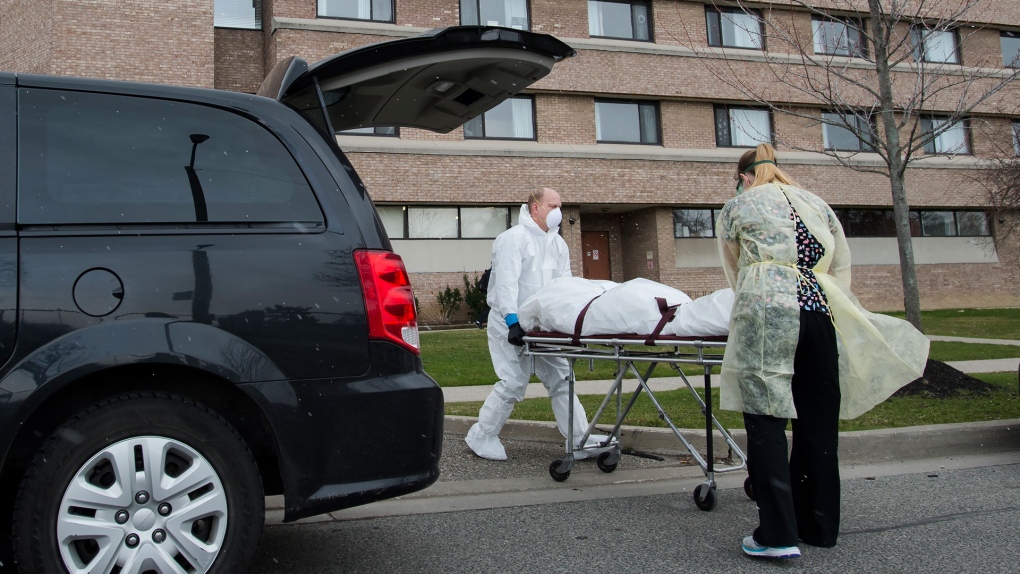 A body is wheeled from the Eatonville Care Centre, where multiple deaths from COVID-19 have occurred, in Toronto on Tuesday, April 14, 2020. THE CANADIAN PRESS/Nathan Denette
A body is wheeled from the Eatonville Care Centre, where multiple deaths from COVID-19 have occurred, in Toronto on Tuesday, April 14, 2020. THE CANADIAN PRESS/Nathan Denette
“She didn’t look right. My mom, despite her dementia, would always have conversations with us when she would see us, but she was just giving one word answers,” she said. “Her hair wasn’t combed, her shirt was unbuttoned, she had no bra on, and she lost so much weight. I showed her her grandson and she didn’t care, she was out of it.”
Military members described that when they first entered Hawthorne Place, they noticed residents had not been bathed for several weeks. Mialkowski said they heard audible choking as staff forcefully fed and hydrated residents. Sometimes meals would be mixed up between residents, he wrote, and those meals would be fed to residents with swallowing difficulties.
At the other Rykka home, Eatonville, similar issues were happening the military noted. The military described there was a “general culture of fear” among staff in terms of using supplies “because they cost money” and that key supplies were often locked away and not accessible. They also said that residents who “routinely soil themselves were not allowed an extra soaker pad or towel to protect their sheets.”
MORE BEDS ALLOCATED DESPITE 176 PEOPLE DEAD AT ONT. RYKKA HOMES
Lamanna said that when she read the military report, her mother had already died in hospital on May 1. It left her in tears, but also, she said, it gave her a sense of relief that the company would be held responsible because an official source had finally documented the pain and suffering of the residents.
Hearing that Rykka Care Centres is still in the running to get new long-term care beds and provincial funding, she said has brought her back to the start.
As part of its most recent budget and campaign promise, the Progressive Conservative government has promised to add 30,000 new long-term care beds over the next 10 years, adding that 20,161 new and 15,918 upgraded beds are in the “development pipeline.”
After Rykka Care Centres applied for some of those beds, the government allocated the company 160 new and 192 redeveloped beds. Despite everything that happened through the pandemic, it remains in the running to get licenses for those beds.
Rykka can use its allocations towards long-term care home projects, which will undergo a consultation process before finalization. The company can get millions of taxpayers’ dollars if their projects pass the consultation phase, a government process that critics call a “sham,” saying it does little to stop these companies from moving forward once allocations are granted. Several other long-term care companies with notorious reputations have already scored licenses.
Rykka Care Centres made an earlier attempt to take over Canada’s only long-term care facility dedicated to serving Korean seniors, but Toronto’s Korean community fought hard to stop its transfer to the for-profit company listed in the military report. And now because of their efforts, a not-for-profit company connected to the community has been approved to purchase this long term care facility.
On a government registry, the Ministry of Long-Term Care says it’s also reviewing a proposal from Rykka Care Centres for issuing a new long-term care home licence for Wellington Park Care Centre in Burlington, Ont. The proposal includes the development of 224 long-term care beds that include the home's 132-beds and an additional 92 beds allocated by the government. Approval can result in the company acquiring millions of taxpayers' dollars.
A spokesperson for the Ontario Ministry of Long-Term Care told CTV News Toronto that the COVID-19 pandemic revealed the need to update and modernize long-term care homes, which means that even for-profit homes will get public funding to fix the issues in their facilities and build new beds.
The ministry also told CTV News Toronto that the pandemic showcased the need to update homes in order to prevent the spread of outbreaks. A spokesperson said the province will add capacity to areas of Ontario with “significant demand.”
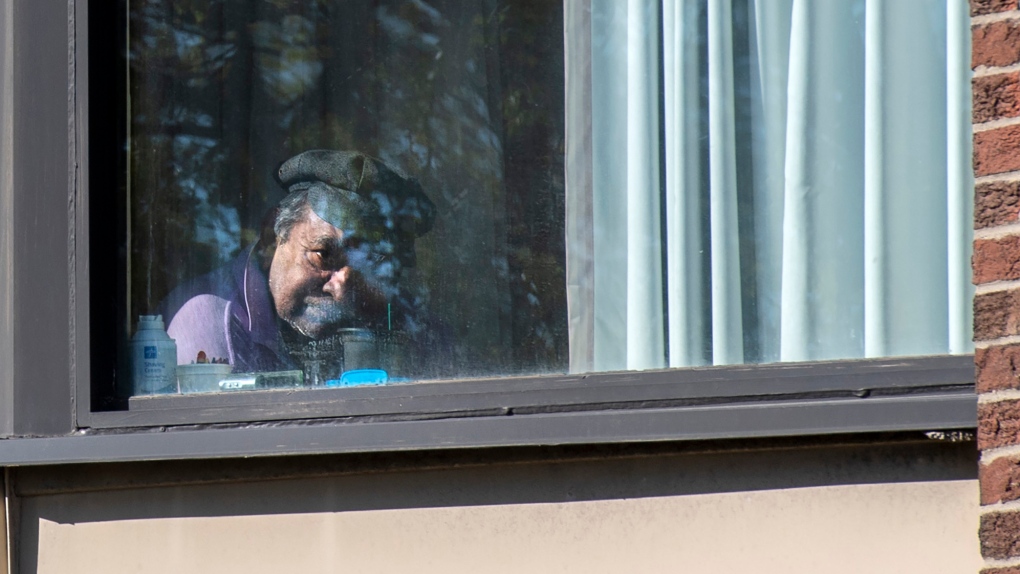 A resident gazes out his window in the morning sun at Hawthorn Place Care Centre in Toronto on Monday, May 10, 2021. THE CANADIAN PRESS/Frank Gunn
A resident gazes out his window in the morning sun at Hawthorn Place Care Centre in Toronto on Monday, May 10, 2021. THE CANADIAN PRESS/Frank Gunn
“The ministry’s evaluation process prioritized redevelopment of older homes to implement the lessons learned on improved infection prevention and control measures, particularly the elimination of three and four bed ward rooms, in which isolation and cohorting has proven difficult,” a spokesperson said.
“New spaces built to modern design standards will help prevent and contain the transmission of infectious diseases and ensure residents have access to the care they need in a safe and secure environment.”
Long-Term Care Minister Rod Phillips did not provide an answer to CTV News Toronto when asked why the long-term care homes listed in the military report have not been penalized, and are instead getting allocations for new beds.
“How can the government grant more to this company but they have so many inspections and the ministry cannot do nothing? They make excuses,” Lamanna said. “People need to be aware of what happened inside this home and the lives lost because of it.”
‘THS IS NOT HOW IT’S SUPPOSED TO END’
Concerns about resident care are ongoing in both the company’s Eatonville and Hawthorne Place locations, according to government inspection reports.
At Eatonville, the government has posted two inspection reports since it published a 29-page report echoing some of the military’s concerns in July 2020.
At Hawthorne Place, an inspection report as early as Oct. 2020, cited concerns about food safety, abuse, and infection prevention and control practises.
Diane Granander, whose 82-year-old husband is currently living in Hawthorne Place, told CTV News Toronto that she’s trying her best to get him out of the home. She said the home has barred her on several occasions from seeing her husband, making excuses each time.
She said she tries to visit her husband often because he is unable to walk and she wants to be there to offer support. She said over the summer, her husband had a broken window in his room and humid air would rush in, and it didn’t get fixed until she contacted the long-term care ministry. She said she does not trust the home to provide proper care and continues to see staff shortages and hygiene issues at the home.
“They don’t want anyone in the home except the residents,” she said. “I need to be there to support him. These people who have the nerve to be nasty to someone in bed who can’t do anything for himself, you don’t know what they will do next."
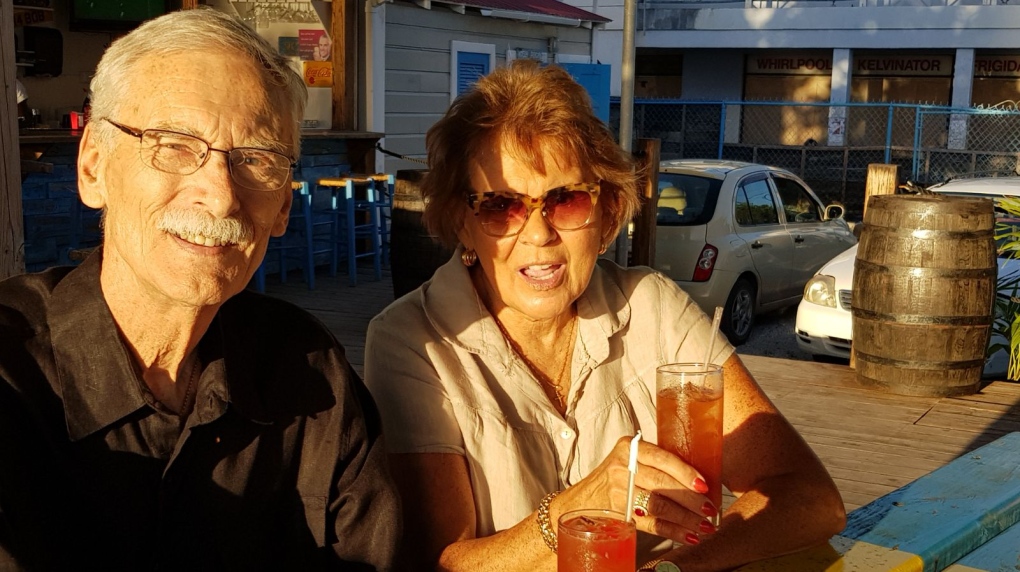 Toronto resident Diane Granander, whose 82-year-old husband is currently living in Hawthorne Place, told CTV News Toronto that she’s trying her best to get him moved to a new home. (Supplied)
Toronto resident Diane Granander, whose 82-year-old husband is currently living in Hawthorne Place, told CTV News Toronto that she’s trying her best to get him moved to a new home. (Supplied)
On the Ontario government website, it reminds long-term care homes amid the pandemic that “residents have a right to receive visitors and homes should not develop policies that unreasonably restrict this right. It is expected that, at a minimum, residents could receive two general visitors and two caregivers at a time.”
“It’s heart-wrenching. Very difficult, this is not how it’s supposed to end. He spent all his life serving this country because he was a pilot,” Granander said through tears. “Now he is in that dump. It is not safe. Something is going to happen in there eventually. It’s not safe.”
Responsive Group, the operating partner of Rykka Care Centres, stated in an emailed statement to CTV News Toronto that the ministry of long-term care said they were “no findings of neglect, malnourishment or dehydration” at Hawthorne Place.
The military stated earlier this year that at Hawthorne Place the “COVID-19 related deaths pale in comparison to general deaths in this long-term care facility and feel the residents are dying from non-COVID-19 causes more than they should be."
In a subsequent review by the Ontario government, The Canadian Armed Forces dismissed some of its own allegations about the death claims, saying it can’t definitively comment on what caused the residents to die, calling them “emotionally charged” comments.
However, an Ontario government inspection report published on Aug. 4, 2020 in response to the military’s allegations wrote of one case of a resident who was “eating and drinking poorly” after returning from hospital during the pandemic. Inspectors found that the home did not assess the resident when their health worsened nor notify a physician before they died.
At least 176 people died due to COVID-19 at Rykka Care Centres homes in Ontario, according to government data. It is not clear if, or how many people, died due to other issues besides COVID-19, including neglect and hunger. No official department is tracking whether causes other than the pandemic hastened the deaths of residents, and critics say home operators are not likely to admit if someone died due to other causes.
According to data collected by the Ontario Health Coalition, the COVID-19 death rate during the pandemic involving for-profit long-term care homes in the province is about nine per cent; comparatively, in not-for-profit homes it stood at 5.25 per cent and, in publicly-owned homes, the number dropped to 3.62 per cent.
Scientists advising the government on the COVID-19 pandemic have stated that for-profit homes had nearly twice as many residents infected with the virus and 78 per cent more deaths compared to non-profit homes. Ontario's own long-term care commission, which investigated how and why the coronavirus spread in nursing homes, stated in its final report that the for-profit aspect of the sector needed to be revisited.
Natalie Mehra, the executive director of the Ontario Health Coalition, said that, at the very least, the Ford government should not provide public funds to the companies with the worst records and violations, including those visited by the military.
“Why would we be paying for-profit companies especially those with hideous records to be building the next generation of long-term care homes? It’s absurd,” she said. “More than 4,000 people are dead and that's not in keeping with the rest of the world, like no one else saw death rates like we saw in Canada in long-term care homes.”
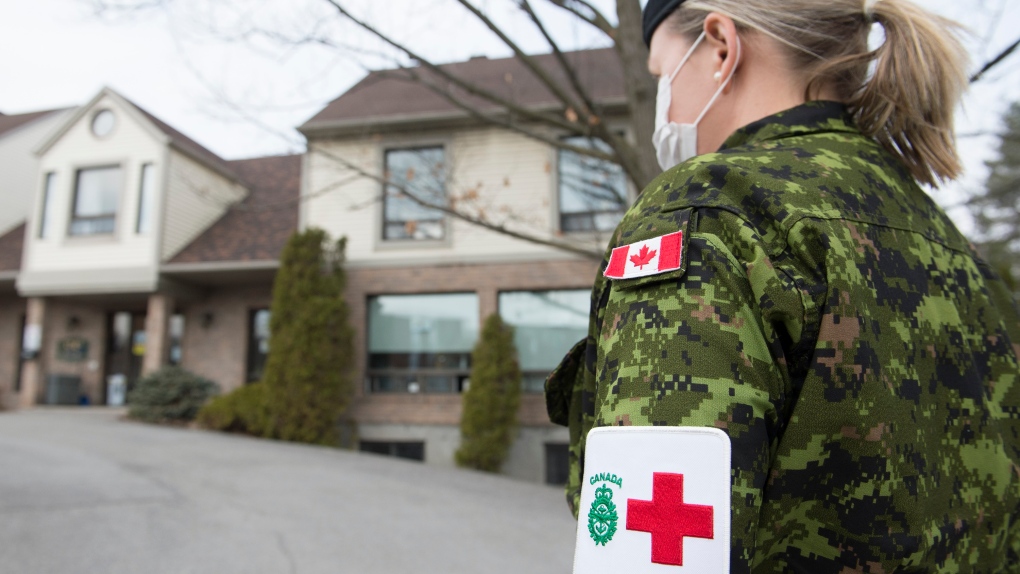 A member of the Canadian Armed Forces is shown at a long-term care home on Sunday, April 19, 2020. THE CANADIAN PRESS/Graham Hughes
A member of the Canadian Armed Forces is shown at a long-term care home on Sunday, April 19, 2020. THE CANADIAN PRESS/Graham Hughes
Nicola Major, a spokeswoman for Responsive Group Inc., said in a statement that its critical for the for-profit company to redevelop its older homes.
“This will provide a new and modern environment for our residents and families to enjoy, and an increase in bed capacity will assist the many seniors who are currently waiting for long-term care,” she said. “New investments from the Ontario government, including a significant boost to funding for additional staff and the refurbishment of Ontario’s aging long-term care infrastructure will go along way.”
AdvantAge Ontario, the association representing more than 200 not-for-profit, municipally-owned and charitable homes in the province, issued a statement on Wednesday, saying all government funding for the development of new long-term care beds in Ontario should be directed to not-for-profit and municipal homes.
The call came after the Minister of Long-Term Care Rod Phillips revealed earlier this week that 140 of 220 new homes – or more than 60 per cent of the government’s pipeline – are currently being awarded to for-profit homes.
Currently, 58 per cent of long-term care homes in Ontario already belong to for-profit companies, a number unseen anywhere else in Canada.
The province’s latest round of applications for long-term care bed allocations closes on Nov. 2, 2021. The applications are open to all for-profit, not-for-profit and municipal operators.
“The government is heading in the wrong direction,” the organization’s CEO Lisa Levin said. “We are asking for Ontario decision-makers to urgently reconsider that position beginning today with the latest round of 10,000 new beds.”
“There is a difference to community-led not-for-profit homes. Not only do they provide more care for residents, but they perform better. We want the province to acknowledge that and reflect it in their choices.”
FORGOTTEN: Part four will be released tomorrow on CTVNewsToronto.ca
CTVNews.ca Top Stories

Quebec nurse had to clean up after husband's death in Montreal hospital
On a night she should have been mourning, a nurse from Quebec's Laurentians region says she was forced to clean up her husband after he died at a hospital in Montreal.
Northern Ont. lawyer who abandoned clients in child protection cases disbarred
A North Bay, Ont., lawyer who abandoned 15 clients – many of them child protection cases – has lost his licence to practise law.
Bank of Canada officials split on when to start cutting interest rates
Members of the Bank of Canada's governing council were split on how long the central bank should wait before it starts cutting interest rates when they met earlier this month.
Maple Leafs fall to Bruins in Game 3, trail series 2-1
Brad Marchand scored twice, including the winner in the third period, and added an assist as the Boston Bruins downed the Toronto Maple Leafs 4-2 to take a 2-1 lead in their first-round playoff series Wednesday
Cuban government apologizes to Montreal-area family after delivering wrong body
Cuba's foreign affairs minister has apologized to a Montreal-area family after they were sent the wrong body following the death of a loved one.
'It was instant karma': Viral video captures failed theft attempt in Nanaimo, B.C.
Mounties in Nanaimo, B.C., say two late-night revellers are lucky their allegedly drunken antics weren't reported to police after security cameras captured the men trying to steal a heavy sign from a downtown business.
What is changing about Canada's capital gains tax and how does it impact me?
The federal government's proposed change to capital gains taxation is expected to increase taxes on investments and mainly affect wealthy Canadians and businesses. Here's what you need to know about the move.
New Indigenous loan guarantee program a 'really big deal,' Freeland says at Toronto conference
Canada's Deputy Prime Minister Chrystia Freeland was among the 1,700 delegates attending the two-day First Nations Major Projects Coalition (FNMPC) conference that concluded Tuesday in Toronto.
'Life was not fair to him': Daughter of N.B. man exonerated of murder remembers him as a kind soul
The daughter of a New Brunswick man recently exonerated from murder, is remembering her father as somebody who, despite a wrongful conviction, never became bitter or angry.

































